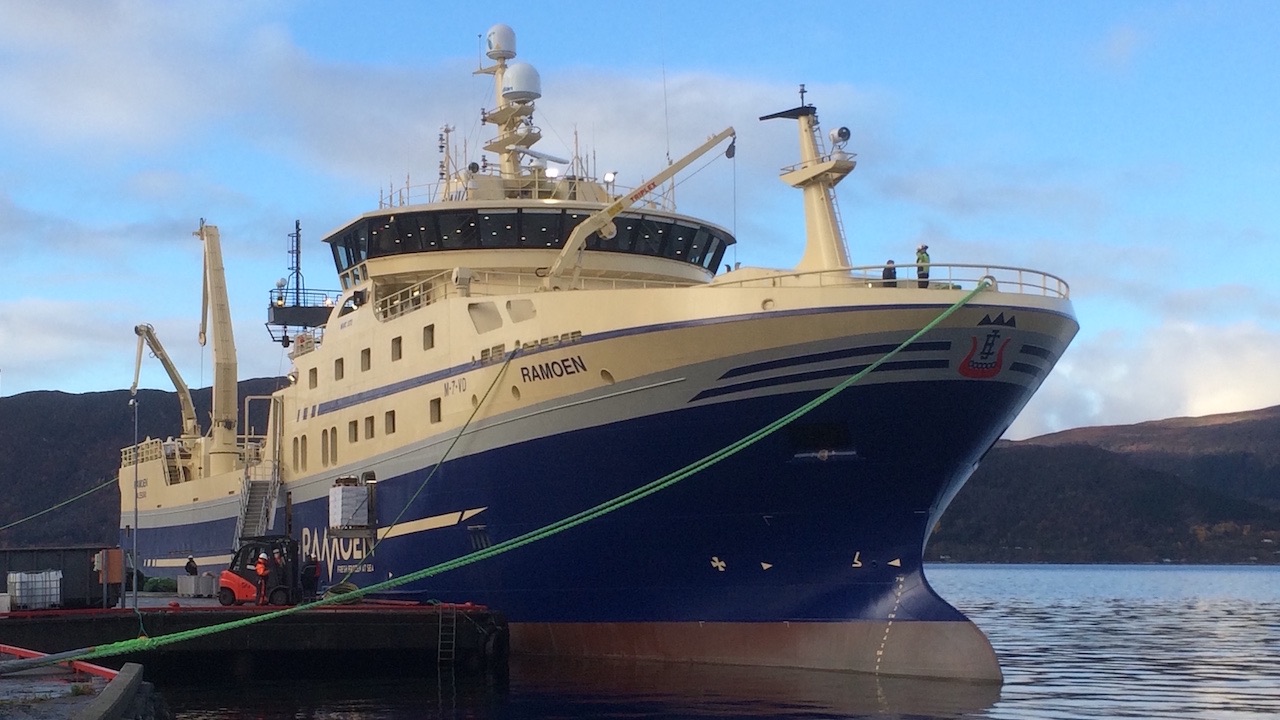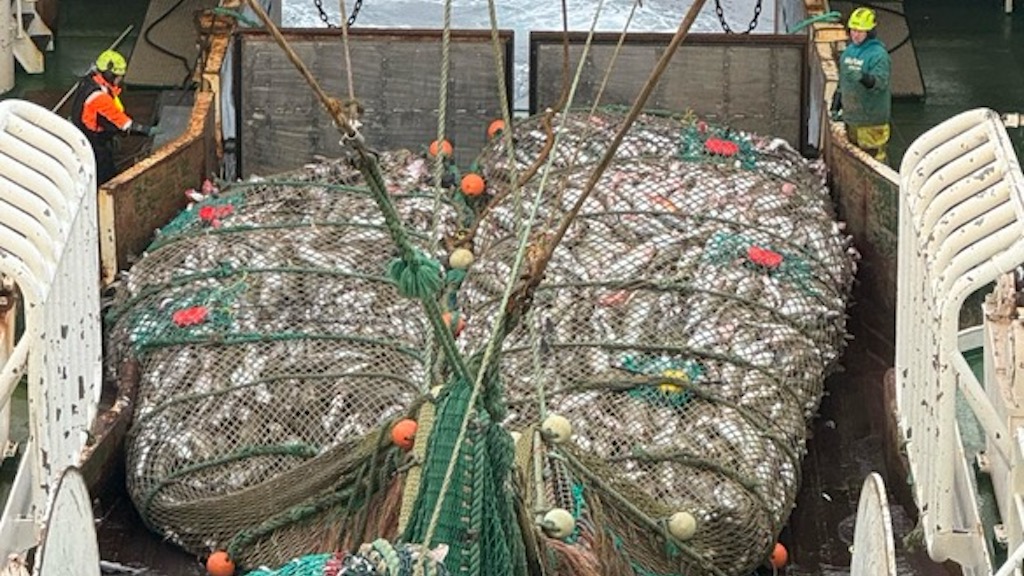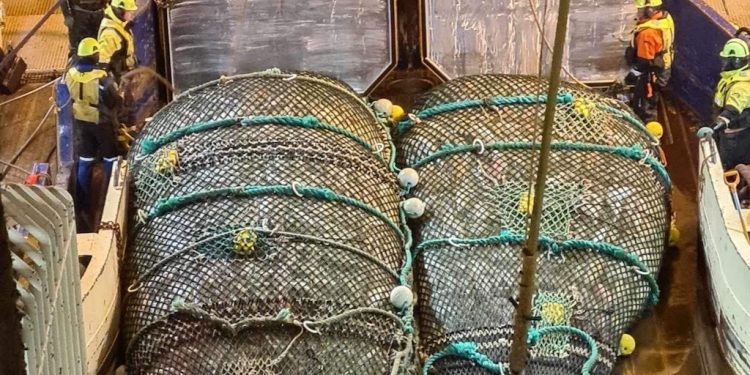Semi-Circular Spreading Gear has been attracting interest with the Norwegian trawler fleet. Although this isn’t exactly new, it has taken a while for this idea to catch on. Now that it has, this ground gear is showing better catch rates and performance than standard rockhoppers – and Mørenot is bringing its SCSG to this year’s Scottish Skipper Expo.
SCSG was initially the subject of a research project by fishing gear supplier Mørenot, the Institute of Marine Research, The Arctic University of Norway, the Directorate of Fisheries and research organisation SINTEF, which tried out this concave groundgear around ten years ago, with promising results. But for a variety of reasons, the development was dropped, although staff at Mørenot pursued it for some time, bringing to it their own ideas and modifications.

According to Haraldur Árnason, Mørenot’s head of trawl gear, who joined the company less than two years ago, the decision was taken to revive this development.
‘We looked into the SCSG files again as we’re increasingly asked to come up with more bottom friendly ground gear,’ he said.
The data that had been collated during those initial trials was convincing enough for the trawl team to resurrect the project and working with the Institute of Marine Research commissioned sea trials on board factory trawler Ramoen. With a twin-rig setup, testing one trawl rigged with the new ground gear and the other on a standard hopper footrope was the best way to get a working comparison – and the results were startling.
‘Every haul showed that the SCSG trawl fished on average 40% better. We asked them to switch the gears over, as often when you’re working twin-rig gear the portside trawl performs slightly better – although not close to that extent,’ he said.
‘The outcome was the same. The SCSG trawl fished on average 40% better every time.’

Along with other research projects the Institute was working on, what came out of the two-week charter on board Ramoen was that underwater footage of the gear showed very different fish behaviour to what’s normally seen with standard ground gear, and as the fish were unable to dive and escape under or between the hoppers, they congregated at the centre of the trawl mouth before dropping back into the gear.
‘We simulated the flows around the SCSG with the software we use for trawl door design, and this showed clearly that the semi-circular sections generate a field of flow that appears to herd the fish in that direction. There’s also a gain in spread with the SCSG between the fishing line wing ends, but the way the gear lies on the ground also provides no escape routes. This is where the huge difference in efficiency lies, so we decided that this was something that we needed to take a better look at,’ he said.
‘We saw from recent footage taken on board the Institute of Marine Research Tromsø-based Helmer Hansen on some seriously difficult ground with heavy boulders that it copes better than standard hoppers. It’s also noticeably lighter to tow and skates over the ground,’ Haraldur Árnason said.
‘Of course, word gets around and now we have seeing a lot of interest. I’m not saying that this is gear that will work everywhere. Time will tell, but it’s clearly very effective for whitefish on Norwegian fishing grounds. We’re seeing a lot of interest in this in Scotland, especially from the trawlers that fish around and along pipelines, as this gear is gentle on the ground and doesn’t dig in. From what we have seen it slips easily over obstructions. During the sea trials with Atlantic Viking there wasn’t a single haul when the gear came fast – and on bad ground they normally expect a fastener every few hauls,’ he said.









